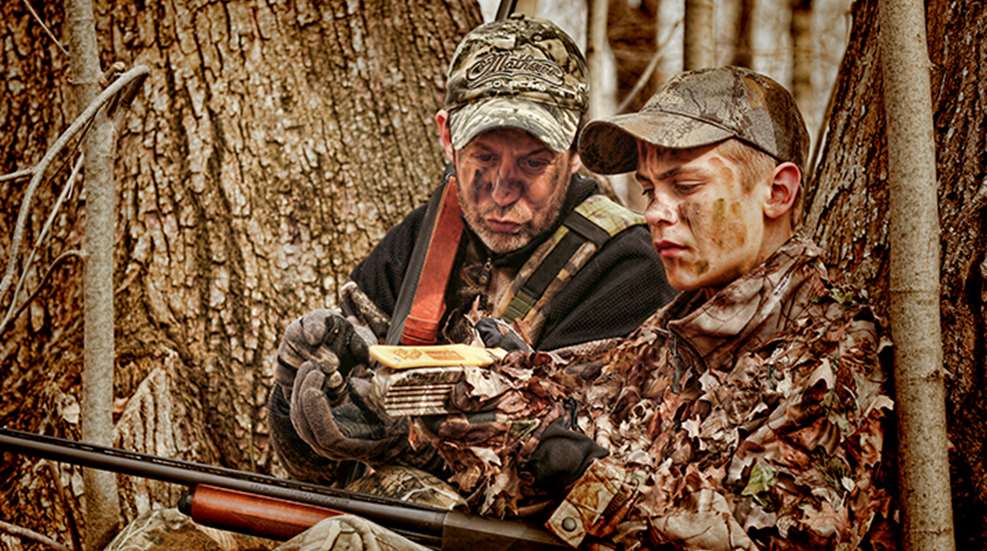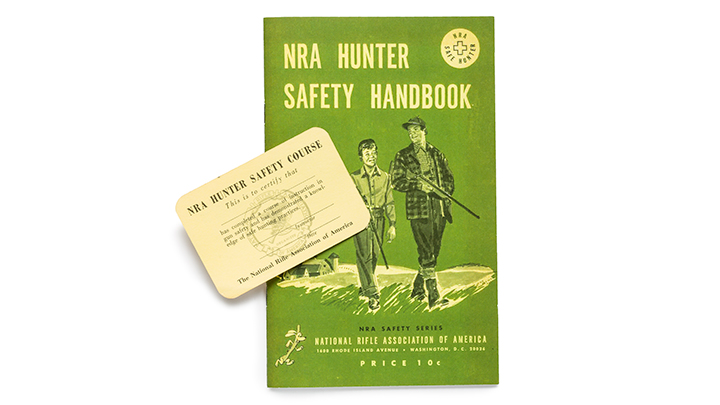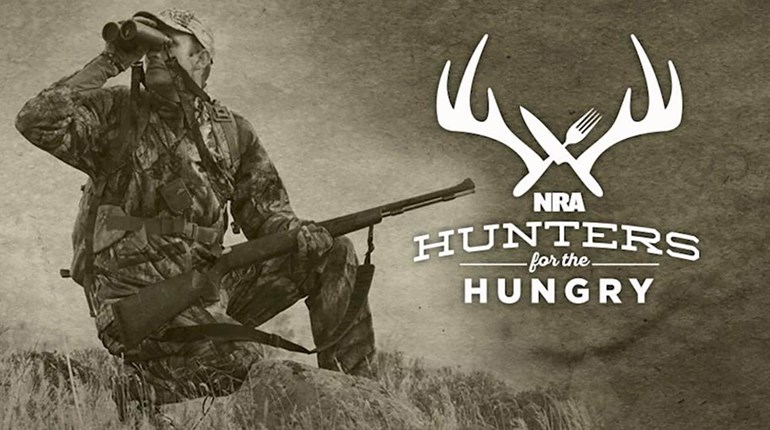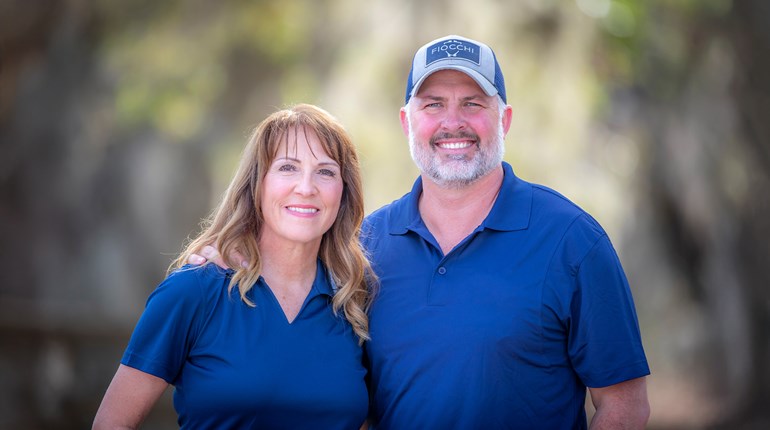
In July 1952, National Rifle Association members learned in an article in The American Rifleman that New York had strived for five years and had thus succeeded in creating a “systematic and thorough program aimed at reducing hunting accidents.” In the article, reprinted from the New York State Conservationist in the only NRA official journal of the time, author P.W. Fosburgh explained the New York Conservation Department had concluded the “most practical means” of reducing hunting accidents was to “make sure persons to whom hunting licenses are issued are properly qualified to handle firearms safely.” Since the state lacked sufficient resources, it had turned to the NRA to develop a firearm training course: “Legally designated as the New York Conservation Department’s agent, the NRA has now been conducting such courses for two full years.”
Fosburgh concluded: “This approach to the problem of hunting accidents represents a pioneer effort, and its outstanding success has attracted the attention of many other states. Credit should go largely to the NRA—and in particular to the Junior Hunter Instructors who have worked hard for no material reward and too little thanks. They have saved many lives.”
Indeed those lives were the first of many saved across decades thanks to the “pioneer effort” of our NRA, which, in 1949 when asked by New York, developed the first effective hunter education curriculum that could be mirrored across the country. It is a story told in American Hunter before but it deserves another, fuller telling in light of our organization’s 150th anniversary.

By the middle of the 20th century, American hunters were all too familiar with hunting accidents—such stories were published across sporting media. Added to this was a factor created by the nascent success of the American conservation movement and a post-World War II economic boom: many hunters. A prominent story regarding this was published in The American Rifleman in December 1948.
In “Will Hunters Learn?” author Pierre Pulling explained he had spent as a game warden 14 days the year before at a mule deer check station in a Western state. “The shooting was easy in an area that had been closed for some twenty years,” he wrote. However, he lamented, “I doubt if over a third of the total had a gun that was properly sighted-in, reasonable shooting skill, reasonable hunting judgment, and such minor equipment as a rope and a sharp knife. Fully half of the hunters, if you delved for the truth, had tragi-comic experiences … . The answer to all this,” he concluded, “is education.”
The next year, in June 1949, NRA Executive Director C.B. Lister, in a letter to members in The American Rifleman, explained: “Education and training is the primary need—equally among shooters and among game commissions and their enforcement agents.”
Following Lister’s op-ed, author Al Look railed at the outset of “Hunted Hunters,” a feature article, that 17 hunters had been “slaughtered along with 72,000 deer during the so-called Colorado big-game season in 1948. … One hundred thirty-two thousand hunters took to the field opening day.” It was enough, he reported, to drive western Colorado cattlemen and sporting clubs to suggest to anyone listening that before obtaining a license “a hunter must prove he can tell a gun from a ramrod, and know how to handle same.”
The NRA was listening. In 1951, in “The Facts About Hunting Accidents,” published in The American Rifleman, author J.A. Harper noted the number of American hunters had increased from 7.6 million in 1940 to 12.6 million in 1950. Amid this, and amid “more strident demands from game commissions and law enforcement agencies for more restrictive hunting and firearms legislation,” the NRA had begun in 1946 to create a Uniform Hunter Casualty Form. In 1950, game departments from Michigan, New York, Pennsylvania, Ohio, Indiana, Illinois, Wisconsin, Minnesota and Ontario recommended the NRA as the collecting agency of such forms and to disseminate data gleaned from them; the resolution was backed by a number of non-governmental organizations.
In 1950, 832 North Americans were injured or killed while hunting. The picture described in what came to be called the Uniform Hunter Casualty Report by the NRA was the first attempt by any organization to ascribe details to hunting accidents, but it was by no means complete. Only 30 states and two Canadian provinces had returned NRA forms, though 43 states and five provinces had pledged to do so. But the report was an important investment in the future of hunting, and represented “the day not too far off” when enough information could be obtained and digested to reduce injury afield.
All of this was coalescing at a time when a unique voice rose among NRA ranks, when Gen. Merritt Edson became NRA Executive Director in June 1951.
Edson, a Vermont native, was a U.S. Marine hero. He served in France in World War I, became a Marine aviator, served in Nicaragua in the 1920s where he earned his first Navy Cross and was a “China Marine” in the 1930s. He was a firing member of Marine Corps shooting teams and in 1935 and ’36 captained the teams to top honors at the National Matches. In 1941 he took command of the 1st Battalion of the 5th Marine Regiment, and retrained it to become the 1st Marine Raider Battalion, popularly known as Edson’s Raiders. On Guadalcanal in September 1942, his leadership during the battle of Lunga Ridge inspired his men to rename the landmark Edson’s Ridge, and it inspired Congress to award Edson the Medal of Honor. During the war in the Pacific, “Red Mike” also earned another Navy Cross and a Silver Star. Merritt Edson retired from the Marine Corps in 1947.
At Edson’s urging, the NRA devoted more attention to hunting, acknowledging that program shifts were necessary to serve the needs of shooters amid an evolving landscape. He recognized the development of hunter education and the Uniform Hunter Casualty Report were solid starts. He understood the popularity of big-bore shooting had waned, that suitable ranges were scarce in a nation shifting to urban life, that development encroached upon local shooting clubs. So Edson pivoted to keep training, same as Marines always do.
Following a successful launch in 1950, the NRA in 1952 expanded its New York hunter education curriculum nationally. Thereafter state after state adopted the NRA program or one like it. The organization strengthened its investment in a junior initiative begun in 1950 that included 15-foot air ranges wherein youngsters could qualify for shooting medals with BB guns under qualified instruction. This was an important development when suitable ranges for centerfire and rimfire arms were scarce and prospects for their construction were not imminent. In 1951, the 25th anniversary of the original NRA junior program, more than 200,000 boys and girls participated in shooting activities. That year, there were more than 3,000 junior clubs in high schools and colleges or at installations maintained by cooperating organizations including Future Farmers of America, 4-H clubs, the Boy Scouts, Veterans of Foreign Wars and the American Legion.
The NRA effort continues to pay dividends after the seeds were sown decades ago.
In the 1960s, the five-year average of hunting accidents in New York was 19 per 100,000 hunters; today the five-year average is 1.8 per 100,000. According to the New York DEC, hunting accidents there hit an all-time low in 2019 when among 12 incidents reported only one was a fatal injury. In the 1960s, hunters in Colorado averaged nine fatal and 24 non-fatal accidents per year. Since 1970 when hunter-education course completion was mandated by hunter demand, that number has dropped steadily. Today, Colorado sees about five non-fatal hunting accidents per year and 1.2 fatalities per year, according to Colorado Parks and Wildlife.
In Pennsylvania, hunting incident rates have declined by 80 percent since hunter education training began there in 1959 … we could continue to note successes based on NRA leadership. Today, our NRA continues to invest in the future of hunting. A prime example is NRA Hunter Education Online, a curriculum we developed and offer free to any agency that chooses to adopt it … but that is another story.




































